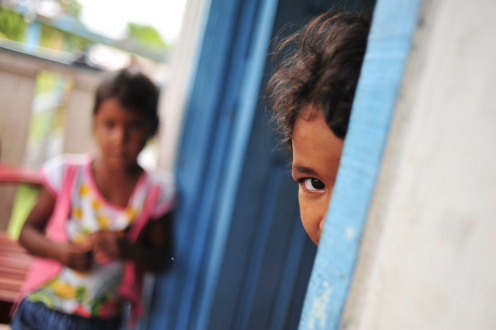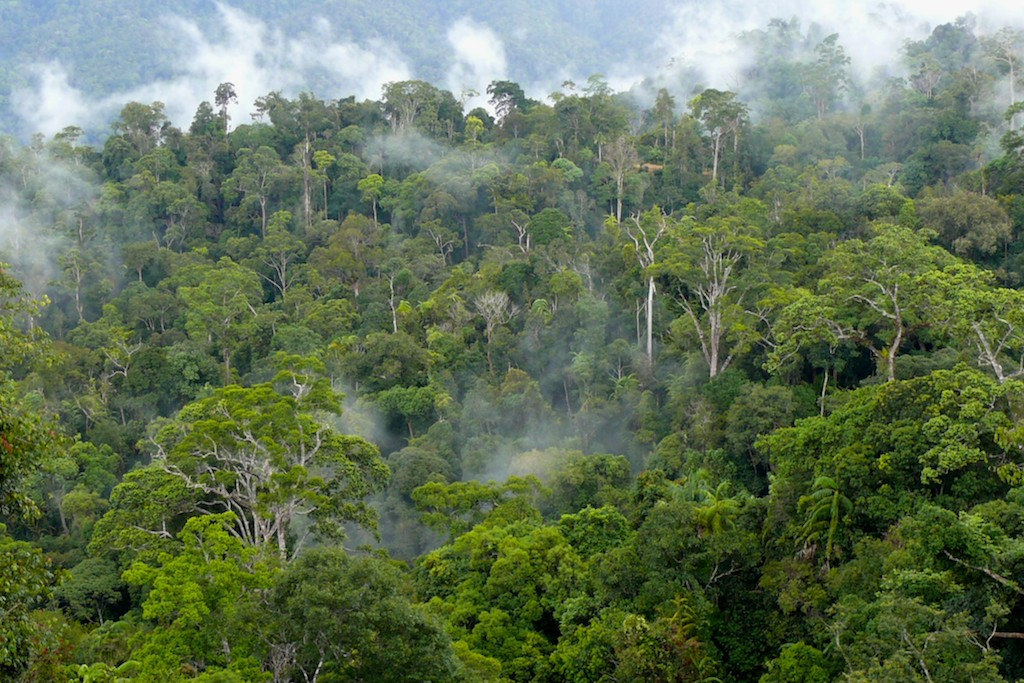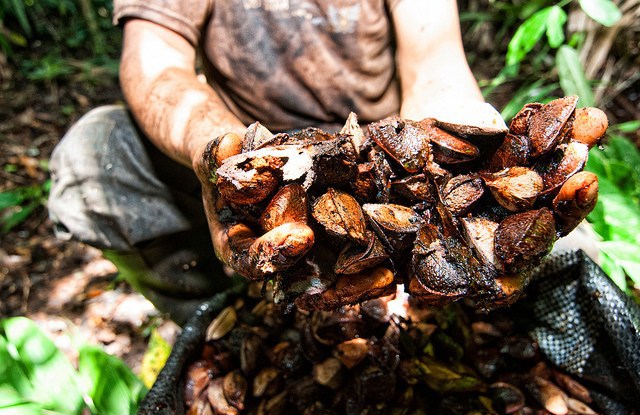
At a glance:
- The UN’s international climate conference in Lima, Peru in December is expected to catalyze action on many forests and climate change issues in the region.
- Civil society organizations will focus on increasing visibility of forests, land use and land-use change in climate change.
- Eyes will be on recently established voluntary carbon markets in Peru, Mexico and Costa Rica to see how well they operate.
- New real-time monitoring tools will give local and national governments and policy makers more accuracy to monitoring forests than ever before.
The international climate conference to be held in December in Lima, Peru – the first time such a meeting will be held in an Amazonian country – will be a crucial opportunity to push forest issues higher up on the agenda, experts say.
With many topics vying for attention, the Lima meeting (COP20) will be a critical stepping-stone toward reaching an international agreement at the 2015 UNFCCC climate conference in France.
Negotiators must go to Paris “ready to make decisions,” said Carol Franco, an environmental economist and research associate at the Woods Hole Research Center in Massachusetts. “We have only two years, and it goes really fast.”
Here are 5 key topics and events addressing forests and climate change in Latin America that she and other experts will be watching this year.
1. The road to the Lima climate conference (COP20)
“The importance of the Lima conference is to get issues on the table for the 2015 climate conference in Paris,” which should end with a final agreement, said Anne Larson, principal scientist at the Center for International Forestry Research (CIFOR).
Those issues include land rights for forest communities and indigenous peoples, links between forests and agriculture, and advancing the progress made at the 2013 climate summit in Warsaw on reducing greenhouse gas emissions from deforestation and forest degradation (REDD+), she said.
Negotiators at COP19 in Warsaw in November 2013 “really moved forward” with agreements on REDD+, said Franco, who is also a member of the Dominican Republic’s climate negotiation delegation. “The countries made a great effort to compromise and discuss.”
Key questions remain, however, especially how REDD+ will be financed over the long term, since cap-and-trade-style carbon markets have languished.
“What we need in 2014 is additional financing to make REDD+ a reality in Latin America and elsewhere,” said Pipa Elias of the Union of Concerned Scientists’ Tropical Forests and Climate Initiative.
“A number of countries put financial pledges on the table in Warsaw, but it is not close to the scale of what most economic analyses have shown that we need to protect forests at the large scale.”
Other topics likely to come up for discussion at the Lima conference include payment for environmental services besides carbon storage and ways of providing incentives and compensation through non-market mechanisms, Franco said.
More topics for the agenda are likely to emerge from the Intergovernmental Panel on Climate Change (IPCC) Fifth Assessment Synthesis Report, which is due for publication just before COP20.
2. Ensure broader forest issues get more political attention
Although negotiators in Warsaw made significant progress on REDD+, broader forest issues need more attention, some experts say. That will be a key task of civil society organizations over the next 10 months, said David Kaimowitz, director of natural resources and sustainable development at the Ford Foundation.
“The most important thing for 2014 is to increase the visibility of the role of forests, land use and land-use change in climate change,” Kaimowitz said.
“In last couple of years, we’ve made a lot of progress on the technical level (especially in REDD+), but we lost momentum at the political level.”
Events designed to bring together conservation and development groups, policy makers, the private sector and scientists include The Economist’s World Forests Summit in Stockholm in March and the World Parks Congress in Australia in November sponsored by the International Union for the Conservation of Nature.
REDD+ may work only if it provides benefits to local people and the host country, in addition to global benefits for climate change mitigation
While the latter focuses on conservation of protected areas, this year’s conference will include series of sessions on climate change, environmental services and the role protected areas play in community well-being.
“We need to re-establish the link between biodiversity and climate change,” said Yolanda Kakabadse, president of the board of trustees of WWF and a former minister of environment of Ecuador. Forests and biodiversity were discussed at this month’s meeting of the Open Working Group on Sustainable Development Goals, which grew out of the UN Rio+20 conference.
3. Land rights for forest people
One policy issue at the top of the list for Larson, Kaimowitz and others is the role of indigenous and non-indigenous forest communities in managing and conserving forests.
Worldwide, local communities and indigenous people own or have some sort of control over more than 500 million hectares of forest, according to a new report by the Rights and Resources Institute. Although Latin America leads other regions, with 39 percent of its forests under community control, many communities and indigenous people still lack legal rights to their forests.
Those rights are crucial if communities are to benefit from programs such as REDD+, which are designed to create conservation incentives.
“Supporting community rights to forest tenure and communities’ ability to defend their forests is absolutely essential in reducing the emissions from forests,” Kaimowitz said.
Forests in indigenous territories are generally conserved as well as – or better than – forests in official protected areas, studies have found. Indigenous groups are likely to mobilize to make that known at the Fourth Meso-American Congress on Protected Areas to be held in Costa Rica in March and the United Nations World Conference on Indigenous Peoples scheduled for September in New York.
4. Voluntary carbon markets
Although international carbon trading is lagging because of low carbon prices, REDD+ is spurring individual countries to establish their own as incentives for forest conservation.
Eyes will be on them this year to see how well they operate.
Peru is among the countries that will be watching carbon exchanges launched in late 2013 in Costa Rica and Mexico. As those exchanges gear up this year, other countries can learn lessons from them and build on their experience, said Gustavo Suárez de Freitas, who heads Peru’s National Program on Forest Conservation for Climate Change Mitigation.
“We also need to look at how to measure the non-carbon benefits of REDD+ projects,” said Bruno Locatelli, a scientist at Agricultural Research for Development (CIRAD) and the Center for International Forestry Research (CIFOR).
“REDD+ may work only if it provides benefits to local people and the host country, in addition to global benefits for climate change mitigation. REDD+ should be part of sustainable development strategies, where the non-carbon benefits could be even more important than the carbon ones.”
This year, the Subsidiary Body for Scientific and Technological Advice of the Climate Convention (SBSTA) will continue considering methodological issues related to non-carbon benefits of REDD+, he said.
“The SBSTA already agreed that it is important to take into account these benefits in REDD+, but also recognized that clarity is needed on the types of benefits and the associated methods. As Latin America has a lot of experience in REDD+, lessons learned can help making progress on non-carbon benefits.”
But the view of forests must go beyond discrete services, says Andrew Jarvis, leader of the Decision and Policy Analysis Program at the International Centre for Tropical Agriculture in Colombia. Climate policy requires “nexus thinking,” which places forests in the middle of a network that connects elements such as land cover, water, energy and security, he said.
“Climate change multiplies threats to food, water and energy security – and overall human security,” and experts in those areas must work together to “draft a message that is useful for politicians,” demonstrating the connections “in a simple and elegant way that is useful for policy makers.”
5. Putting monitoring tools in the hands of local governments
The success of REDD+ and carbon trading depends on accurate measurement, reporting and verification (MRV) of forest cover change and carbon stocks. Local and national governments and policy makers have more access to monitoring tools than ever before – a trend that is likely to continue in 2014, with the launch of Global Forest Watch, a near-real-time monitoring system.
It will join systems such as Terra-i, the Carnegie Institution for Science’s CLASlite and a new, high-resolution system for mapping land-cover change unveiled by Matthew Hansen of the University of Maryland at the end of 2013.
Light Detection and Ranging (LiDAR) technology remains the gold standard for mapping carbon stocks, according to Scott Goetz, deputy director and research scientist at the Woods Hole Research Center.
Terrestrial LiDAR scanners provide a detailed picture of biomass in a particular location, while researchers can use systems mounted on small planes to map an entire region or country, as Carnegie Institution tropical ecologist Gregory Asner did in Panama.
Both have limitations, however – the terrestrial system is limited in range, while a plane-based system is expensive and requires repeated overflights. The best solution – and the goal of scientists working on monitoring technology – would be a spaceborne LiDAR system mounted on a satellite or the International Space Station, Goetz said.
We want you to share Forests News content, which is licensed under Creative Commons Attribution-NonCommercial-ShareAlike 4.0 International (CC BY-NC-SA 4.0). This means you are free to redistribute our material for non-commercial purposes. All we ask is that you give Forests News appropriate credit and link to the original Forests News content, indicate if changes were made, and distribute your contributions under the same Creative Commons license. You must notify Forests News if you repost, reprint or reuse our materials by contacting forestsnews@cifor-icraf.org.

